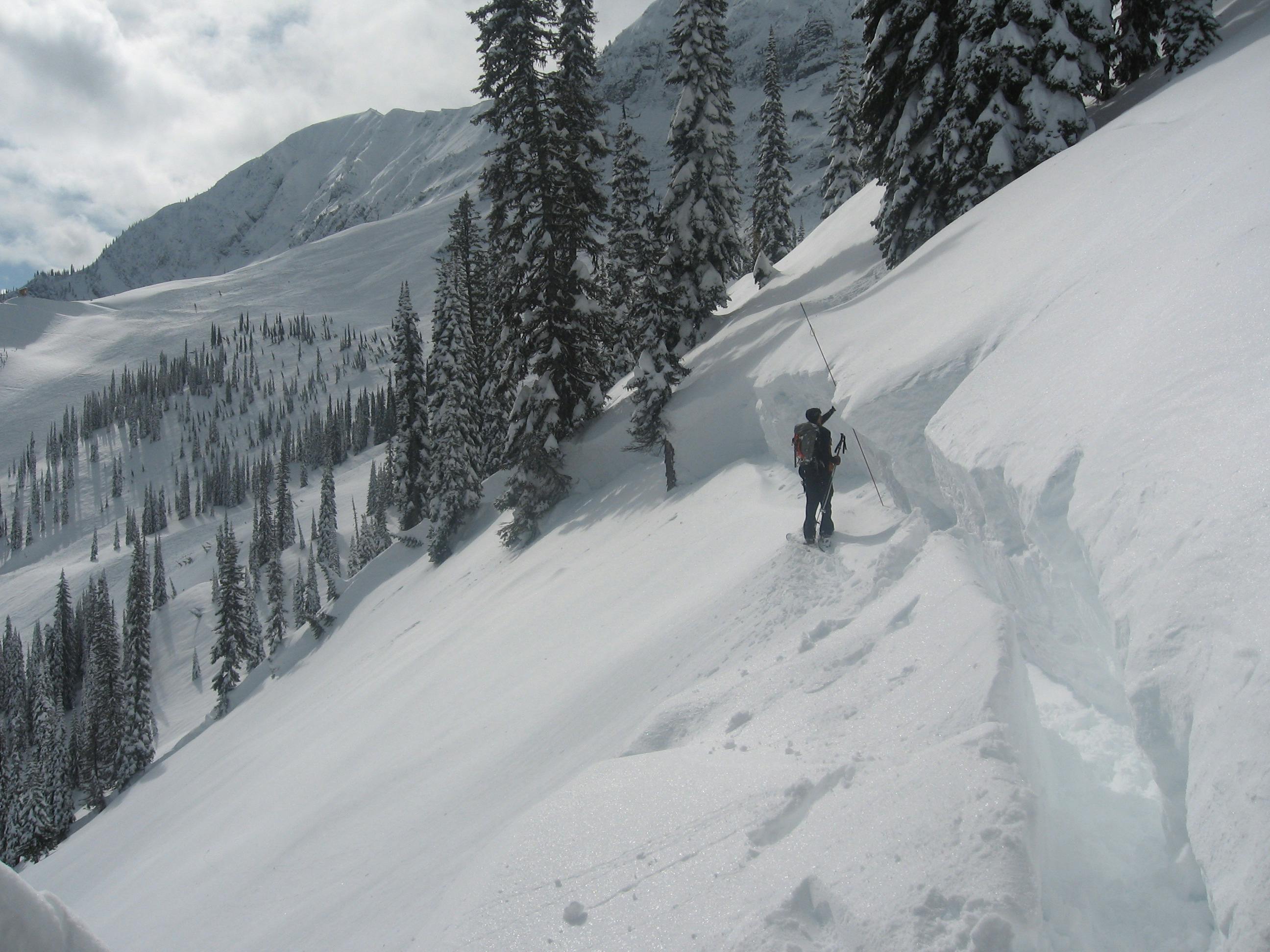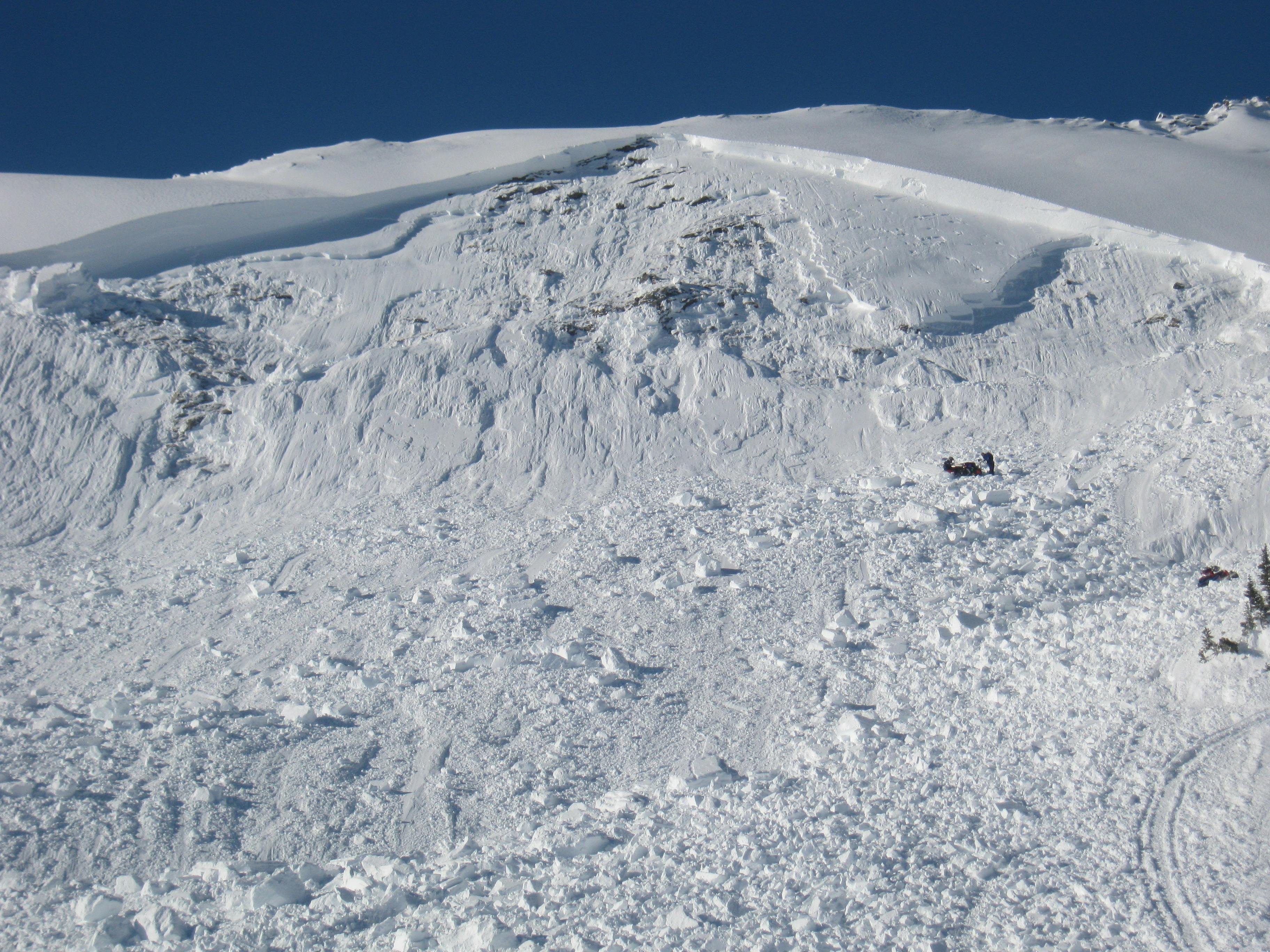

- Credit
- Curtis Pawliuk
Deep persistent slabs are an avalanche problem defined by the presence of a weak layer, usually at or near the base of the snowpack, that resists bonding to an overlying slab over an extended time period.
This weak layer is normally a product of snow grain metamorphism within the snowpack rather than the accumulation of new snow or formation of surface hoar on the snow surface. Once formed, a deep persistent slab can last for an extended period, sometimes throughout the entire season. They can survive numerous avalanche cycles and are inherently difficult to forecast.
A deep persistent slab problem often leads to a low-probability/high-consequence scenario, where the chances of triggering an avalanche are slim, but the destructive potential of any that are triggered is great. Managing this problem involves avoiding large avalanche paths and avoiding terrain where the problem exists.